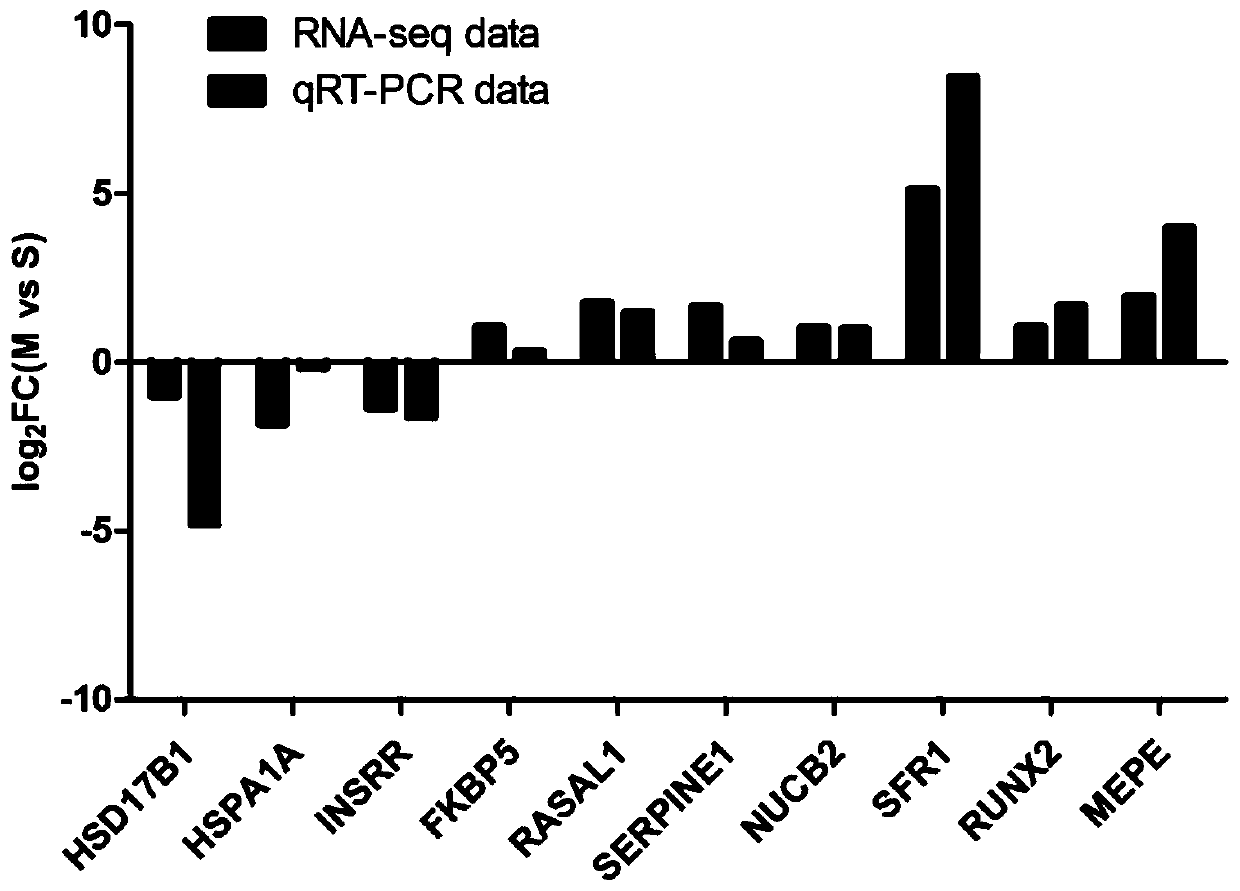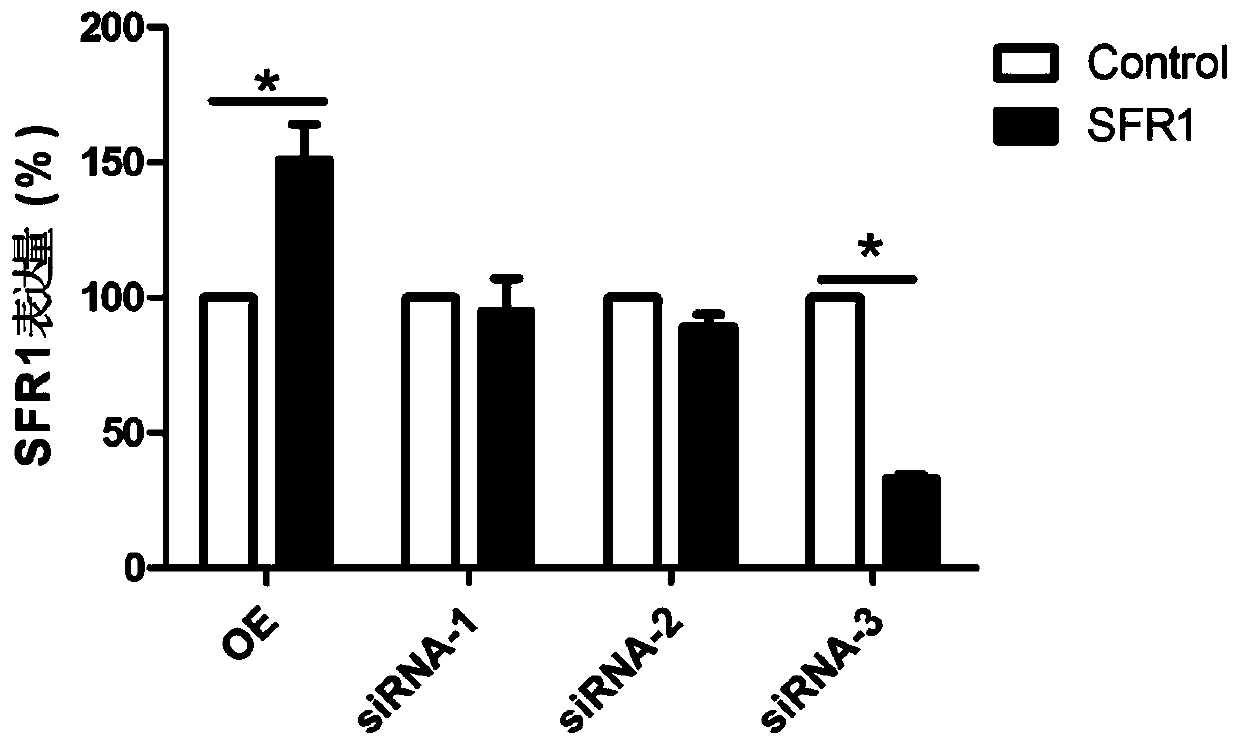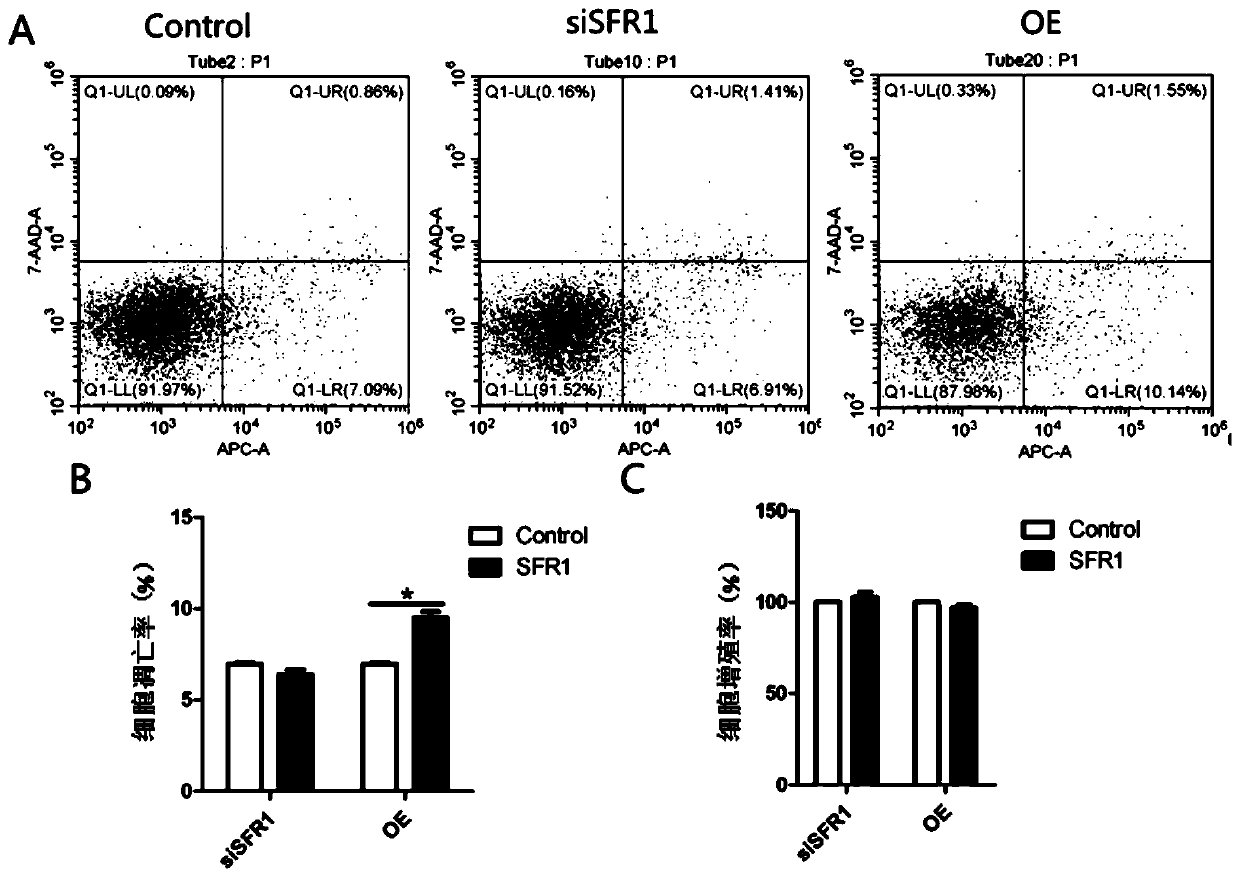1ncRNA SFR1 as well as application thereof and product and method for regulating and controlling follicular development
A technology of follicle development and products, which is applied in the field of products regulating follicle development, and can solve problems such as low fecundity and impact
- Summary
- Abstract
- Description
- Claims
- Application Information
AI Technical Summary
Problems solved by technology
Method used
Image
Examples
Embodiment 1
[0077] Example 1 Location of lncRNA SFR1
[0078] During the screening of differentially expressed genes with different litter sizes, the inventors detected a new differentially expressed lncRNA (MSTRG.28645), and named it SFR1 (Sheep Fedunty Related LncRNA1, SFR1).
[0079] SFR1 was used in cpc( http: / / nar.oxfordjournals.org / content / 35 / suppl_2 / W345.full ) software and cnci ( https: / / github.com / www-bioinfo-org / CNCI ) lncRNA predicted by the software for the first time. After working with Ovis aries4.0( https: / / www.ncbi.nlm.nih.gov / genome / 83?hl=en genome_assembly_id=259810 ) comparison of the reference genome, it was found that it is located on chromosome 6 of sheep, and its position on the comparison is 66449727-66452013.
[0080] In order to determine whether the newly predicted lncRNA SFR1 is expressed in sheep granulosa cells, qRT-PCR primers for SFR1 (Forward: AGTCATT CCAAACTTCATCCTCC; Reverse: GGGACACTCTTCCGACTATTACAA) were designed based on the sequence inform...
Embodiment 2
[0081] Example 2 Overexpression of lncRNA SFR1
[0082] Firstly, the full-length 2,791bp cDNA sequence of sheep lncRNA SFR1 was cloned, and then the eukaryotic expression vector of sheep SFR1: pIRES2-ZsGreen1-SFR1 was constructed, and its function was verified by transient transfection in sheep ovary granulosa cells. The relative expression of SFR1 was 150.88±13.13%, as figure 2 shown. Among them, "control" represents the untreated control group; "SFR1" represents the SFR1 expression-treated or interfered-treated group. "OE" represents the SFR1 overexpression treatment group; "siRNA-1" represents the SFR1 siRNA-1 treatment group; "siRNA-2" represents the SFR1 siRNA-2 treatment group; "siRNA-3" represents the SFR1 siRNA-3 treatment group. Data are expressed as mean ± SEM, and statistical analysis was performed using t-test. * means significant difference, p<0.05.
Embodiment 3
[0083] Example 3 siRNA interference of lncRNA SFR1
[0084] In order to achieve a better siRNA interference effect, three pairs of interference fragments were first designed for sheep SFR1 (siRNA1 (1987): CCGAAUUCCUGACAUAUAUTT AUAUAU GUCAGGAAUUCGGTT; siRNA2 (2498): CCGCAAUAUGUAAGACAAA TT UUUGUCUUACAUAUUGCGGTT; siRNA3 (2279): GGACACCUACAGAGACUUGAATGAGU) figure 2 As shown, the expression levels of SFR1 relative to the blank group were 94.94 ± 12.20%, 89.48 ± 4.19% and 33.32 ± 1.29% respectively after the interference of 3 pairs of interference fragments. Therefore, the third pair of interference fragments (SEQ ID NO.2 and SEQ ID NO.2 and SEQ ID NO. .3) Perform subsequent cell transfection experiments.
PUM
 Login to View More
Login to View More Abstract
Description
Claims
Application Information
 Login to View More
Login to View More - R&D
- Intellectual Property
- Life Sciences
- Materials
- Tech Scout
- Unparalleled Data Quality
- Higher Quality Content
- 60% Fewer Hallucinations
Browse by: Latest US Patents, China's latest patents, Technical Efficacy Thesaurus, Application Domain, Technology Topic, Popular Technical Reports.
© 2025 PatSnap. All rights reserved.Legal|Privacy policy|Modern Slavery Act Transparency Statement|Sitemap|About US| Contact US: help@patsnap.com



